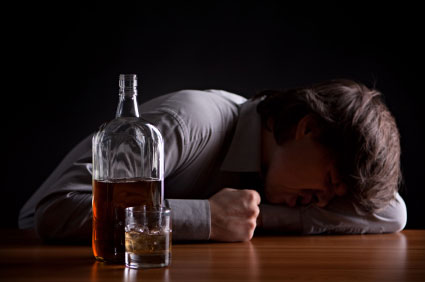By USDR

Many Americans are clueless when it comes to what high-risk drinking looks like and may not even realize they’re binge drinking, report the experts at Caron Treatment Centers. In fact, according to Caron’s new holiday survey, many people accept higher-risk drinking at holiday parties despite observing significant consequences of alcohol consumption such as drunk driving, sexual harassment and violence.
The annual survey was commissioned by Caron Treatment Centers and conducted by Harris Interactive. This online omnibus poll was based on a nationwide sample of 1,968 adults in the U.S. aged 21 and over.
“Alcohol is still the number one cause of damaging behavior at holiday celebrations throughout the U.S.,” said Dr. Harris Stratyner, PhD, Regional Clinical Vice President of Caron Treatment Centers in New York. “We tend to see an increase in alcohol abuse during the holidays and the findings show that many people have no sense of how much alcohol is healthy to consume or how it impairs them when they go past that low-risk limit. It’s a serious public safety concern when 60% of adults who attend holiday parties witnessed dangerous and even illegal behavior.”
In fact, misperceptions about alcohol are linked to its affordability, availability and the billions of dollars spent annually on consumer advertising and product placement in television and films, according to the U.S. Department of Justice.
So what does low-risk drinking look like? According to the National Institute on Alcohol Abuse and Alcoholism, low-risk drinking is defined as no more than four drinks per day for men and no more than three drinks per day for women. This should not exceed 14 servings for men and seven servings for women in a week; the NIAAA also shares what constitutes a standard drink.
Based on Caron’s survey results, many Americans are either unaware of this information or aren’t taking it seriously. Nearly 80% of U.S. adults have attended a workplace holiday party and 93% have attended a family party, according to the survey. The survey asked adults aged 21+ what they considered to be the acceptable number of drinks during these occasions:
- 44% said consuming three or more drinks during family holiday parties was fine as long as the imbiber could “hold their liquor” and refrain from driving
- 32% felt three or more drinks was acceptable at workplace holiday parties as long as the person could “hold their liquor” and refrain from driving
Many of these adults polled also noted that these parties can quickly become booze fests where there’s no shortage of destructive behavior:
- 60% of those who attended workplace holiday parties have seen someone under the influence of alcohol behave inappropriately. Survey respondents reported that an intoxicated male colleague “slapped a female co-worker on her bottom” and another “threw up on the boss.”
- 60% of those who attend family holiday parties also reported that a family member behaved inappropriately after drinking too much alcohol. One respondent shared that alcohol prompted “a knock out drag out fist fight” and another spoke of “emotionally abusive behavior” during a family holiday party. Others said relatives wanted to drive even though they were drunk.
Of those who said they have a co-worker/supervisor who puts themselves in embarrassing situations due to excessive drinking at workplace holiday parties:
- 50% saw a co-worker/supervisor share inappropriate personal details about themselves or other colleagues
- 45% saw a co-worker/supervisor flirting with another colleague
- 43% saw a co-worker/supervisor drive even though he or she was drunk
- 35% saw a co-worker/supervisor using excessive profanity
- 30% saw a co-worker/supervisor argue, be abusive or engage in sexual activity
“We want to help individuals and families change their perception about what healthy alcohol consumption actually looks like and empower them to seek help for substance abuse,” said Paul Hokemeyer, PhD, Senior Clinical Advisor at Caron Ocean Drive.
Individuals and families can educate themselves on ways to ensure safer, happier and healthier holiday celebrations.

Average Rating